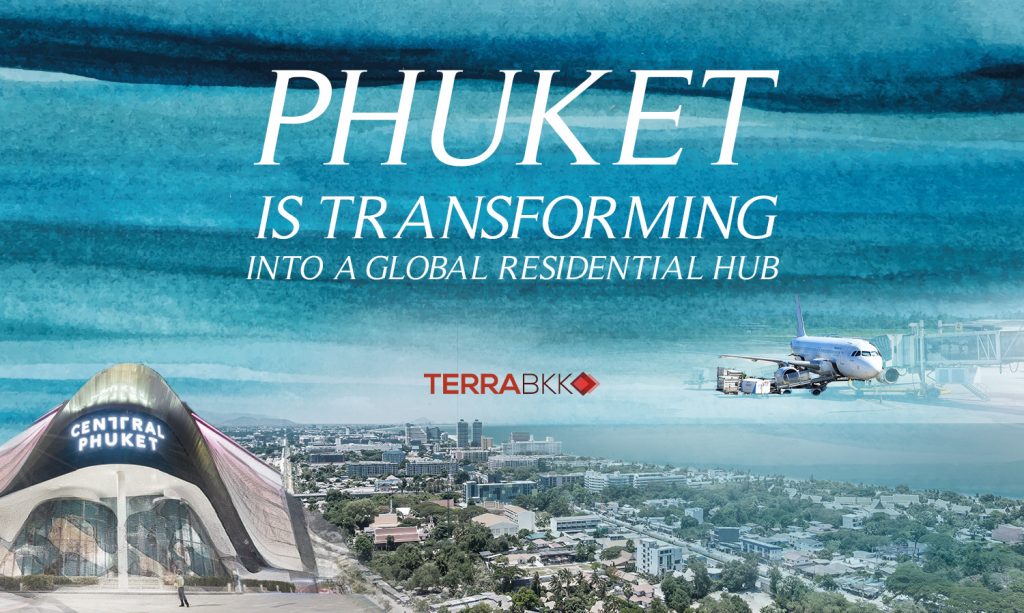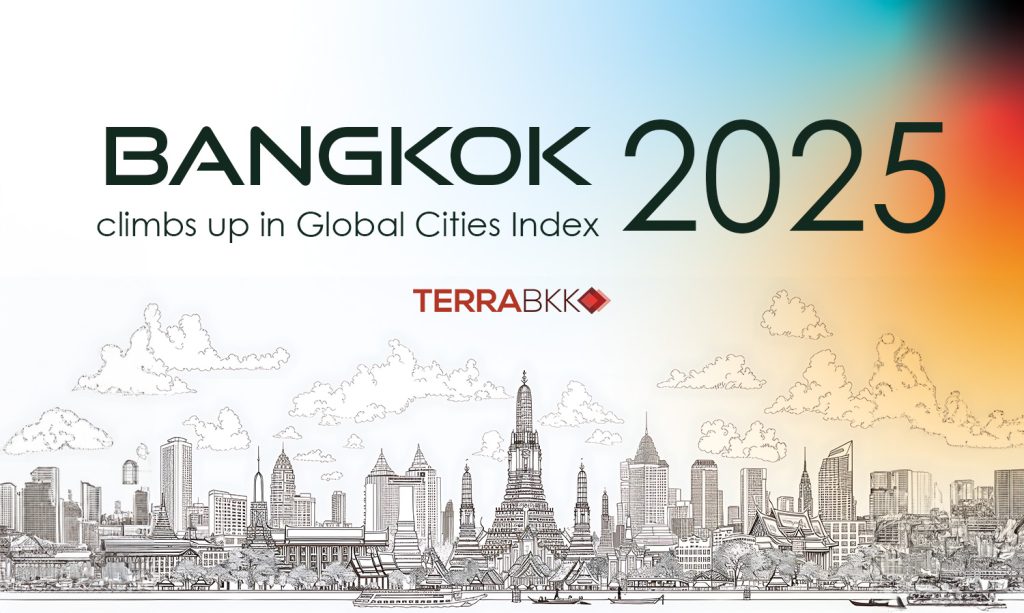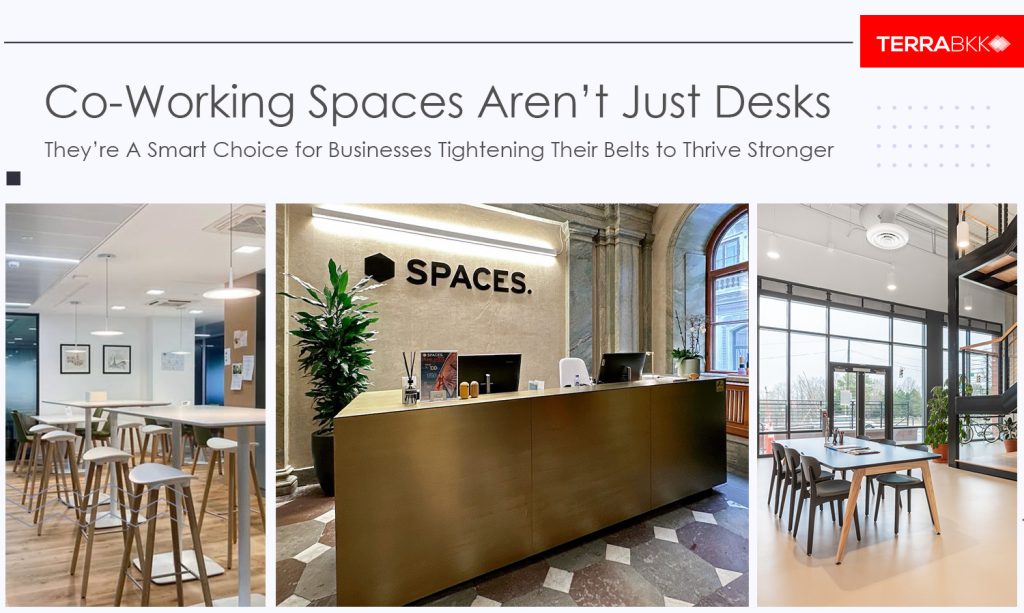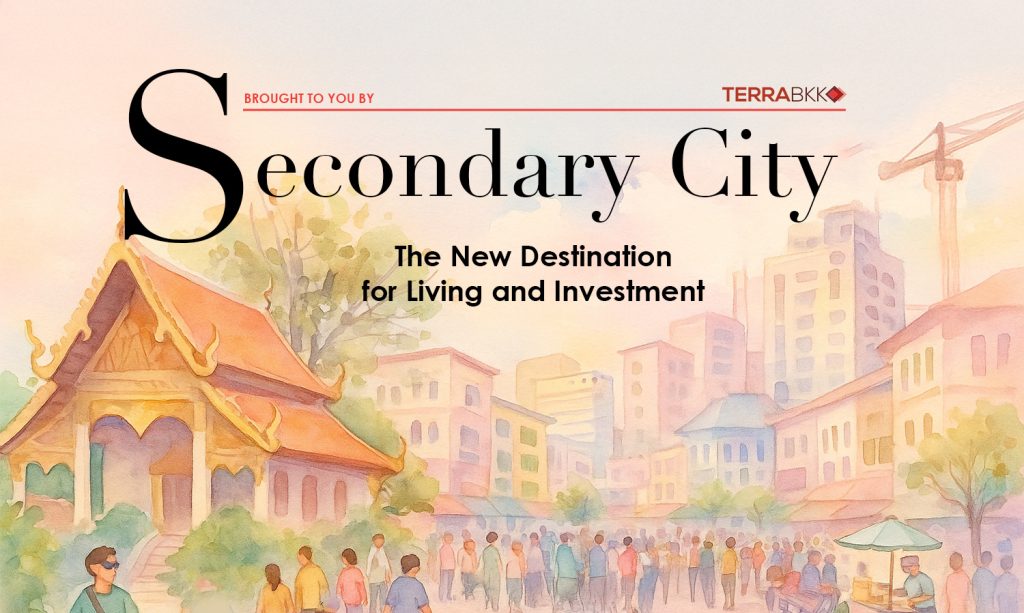NEWS & EVENTS
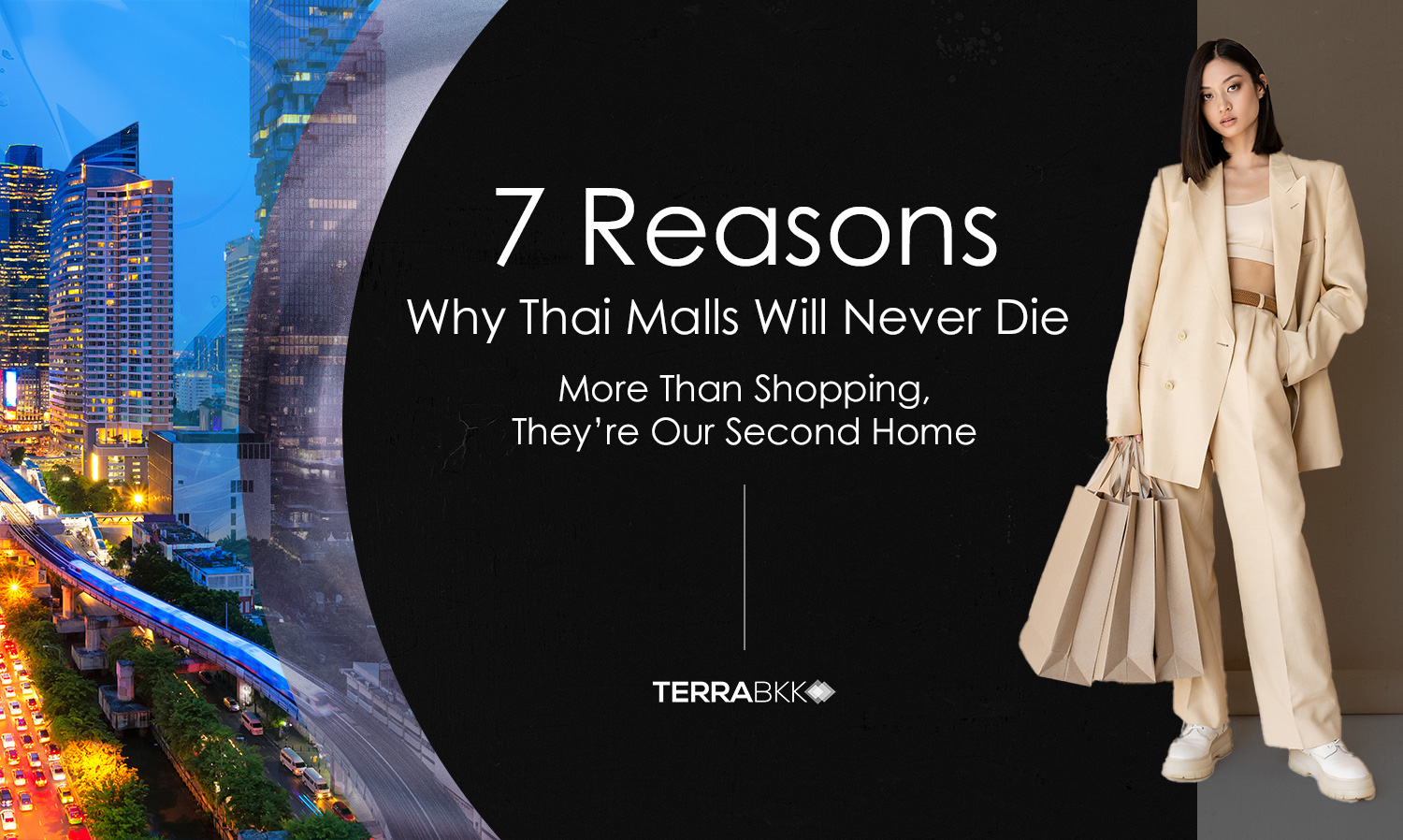
In an era where e-commerce is growing at lightning speed — so much so that our thumbs work harder than our legs — just a few swipes on a smartphone can bring products right to our doorstep. This coincides with the overall retail market, which has shown signs of “slow growth” over the past two years.
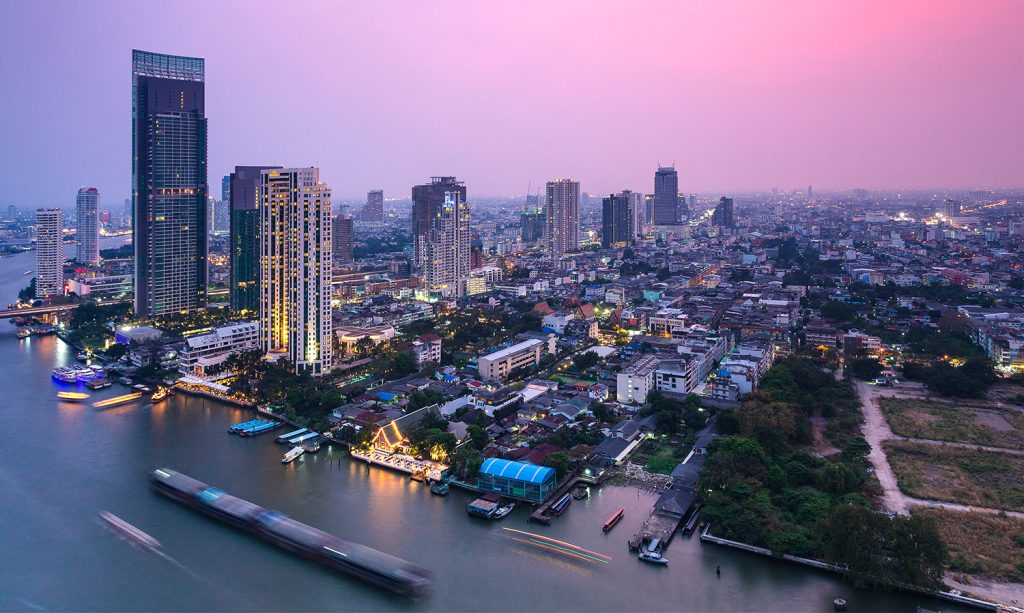
What’s surprising, however, is that major shopping centers and department stores refuse to give up. They continue to expand new retail spaces with remarkable energy, defying every prediction that traditional malls are fading away under the rise of online shopping. In fact, prime city centers remain fierce battlegrounds where leading retail giants are pouring massive investments into ever larger and more luxurious developments — so much so that some even joke, “There are more malls than shoppers!”

Recently, Central Park at the Dusit Central Park project unveiled over 130,000 sq.m. of retail space. The project was launched in Q3 2025 as the first truly high-end lifestyle hub in the area. The development is seamlessly connected to a vast urban rooftop park in the heart of Bangkok — a landmark on par with those in world-class metropolises.
Meanwhile, Siam Paragon is set to debut three new world-class attractions by the end of 2025. Backed by an investment of over THB 1.25 billion to deliver fresh, immersive experiences. Among them, SEA LIFE Bangkok is expected to welcome more than 2.5 million visitors annually, while two additional world-class destinations will span over 20,000 sq.m.: MELAND – Thailand’s first world-leading indoor theme park, covering 5,000 sq.m; NEXTOPIA – a 15,000 sq.m. futuristic city prototype, a revolutionary concept set to make global history as the first of its kind in the world.
This phenomenon is no coincidence — it stems from the unique interplay of social dynamics, climate, and the smart adaptation strategies of Thai retail developers that have made them exceptionally resilient players.
The continuous rise of new retail spaces — particularly large-scale mixed-use developments that integrate shopping malls with offices and residences — keeps this sector among the most competitive industries in the country.So, what are the “secret ingredients” that keep Thai malls in the spotlight, defying predictions of decline and staying deeply rooted along Thailand’s mainstreams? Let’s unlock the reasons why Thai malls are more than just shopping destinations — they have become a true “home away from home” for people across every generation.
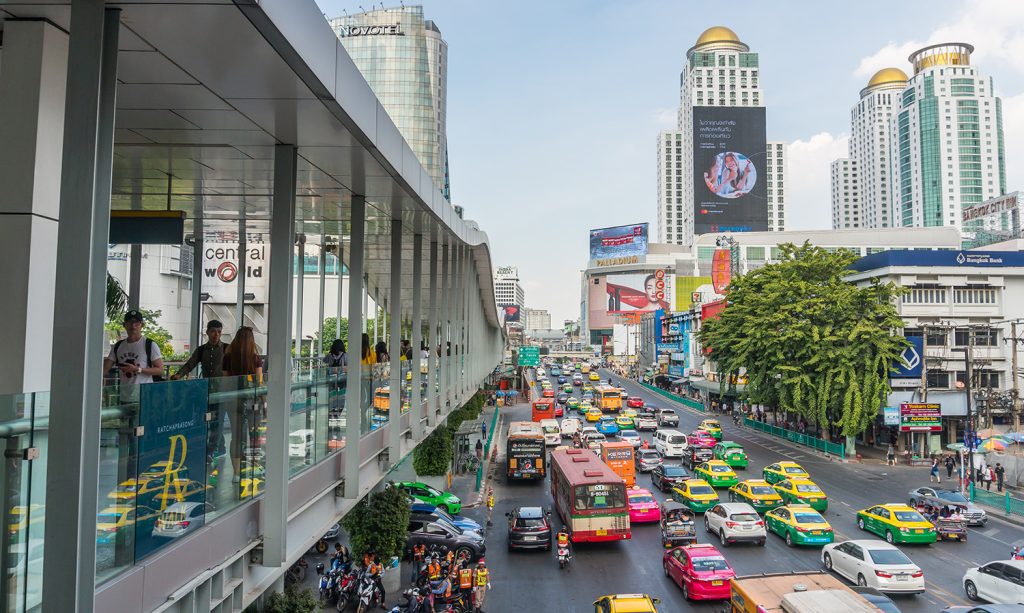
1. The Air-Conditioned Wall That Shields from Inhospitable Outside World: When the Mall Becomes a Sanctuary for Body and Mind
The first and most undeniable factor — and perhaps the most powerful geographical one — is Thailand’s climate. Known as one of the sunniest countries on Earth, Thailand’s streets are growing hotter by the day, not to mention the seasonal return of unwelcome guests like PM2.5 air pollution.
Outdoor public spaces have thus become increasingly inhospitable for leisure or relaxation. In response, shopping malls have transformed themselves into the ultimate “alternative public spaces” — or modern “Third Places.” Whether people want to meet friends, read, exercise, stroll to escape the heat, or even walk their dogs (a unique draw for some malls), they can do so freely — all within a cool, comfortable, and welcoming environment.
That’s why, for many Thais, “going to the mall” has become the go-to activity when there’s nowhere else to go. In this climate, good air-conditioning isn’t just a service — it’s a necessity, and perhaps the most vital element that keeps Thai malls alive and thriving.
2. The Evolution of the ‘One Stop Service’: When Malls Become the Center of Living
In the early days of Thailand’s retail industry, department stores primarily served one purpose — to sell products. But today, that concept has completely transformed.
Modern Thai shopping centers have elevated themselves to become “the central hub of everyday life.” This is where they stand out far beyond their global counterparts. Thai malls have perfected the “One Stop Service” strategy — bringing everything together under one roof for the ultimate convenience, catering to every aspect of life from morning to night. Examples include:
- Food Hub: Dining spaces have expanded dramatically, with restaurants and cafés becoming key magnets that draw visitors in.
- Wellness & Medical Center: Many large malls now dedicate space to health and wellness — from clinics to full-scale hospitals — aligning with the growing medical tourism trend that attracts international visitors to spend in Thailand.
Experience Hub: The focus has shifted toward offering unique and seamless experiences — from cinemas, skating rinks, and co-working spaces to water parks and world-class celebration events — all designed to create shared memories for both locals and tourists alike.

3. Competing Not on Price, But Through an Ever-Evolving Supply
While online shopping may hold an advantage in terms of pricing and attractive promotions, the real competition in Thailand’s retail market lies in “space” and “project innovation” — a race that never stops.
New supply drives the market: Retail space in Bangkok and its metropolitan area continues to expand steadily, with forecasts showing rental retail supply growing by an average of 3.0% per year, or about 450,000 square meters. Most of this growth stems from large-scale mixed-use developments such as One Bangkok and Dusit Central Park, which seamlessly integrate malls with offices and residences — effectively creating miniature cities that sustain a constant cycle of consumption.
Expansion into suburbs and regional cities: The extension of mass transit routes, particularly Bangkok’s BTS and MRT lines, has encouraged major developers to extend their investments into suburban and upcountry locations. This strategy allows them to reach a broader customer base while simultaneously stimulating local economies across the nation.
4. The Magnet for Big Spenders: The Power of Tourism and Luxury Brands
Thailand’s shopping centers don’t rely solely on domestic purchasing power — they also serve as regional shopping destinations, attracting massive spending from international tourists.
Tourism recovery: Following recent global crises, the return of foreign visitors has significantly boosted mall spending. The number foreign visitors is expected to continue rising, although not at peak as before the COVID pandemic. Government policies such as visa exemptions and tourists’ preference for offline shopping experiences have been key drivers behind this resurgent spending momentum.
A wealthy customer base: According to Euromonitor, Thailand has a highly concentrated urban affluent class, forming a core group of high-spending consumers eager to purchase luxury and premium goods. Shopping malls thus play a vital role as the primary platform for luxury brands to showcase their products — offering the tactile experience and trustworthy brand engagement that e-commerce simply cannot replicate.
5. The Need for ‘Human Touch’ and Shared Experience
Even though the online world connects people anytime and anywhere, one thing technology still cannot replace is the “human touch” — real, face-to-face interaction.
Analysts widely agree that consumers continue to seek places to meet, socialize, and unwind, and Thai shopping malls fulfill this role perfectly — serving as people’s “second or even third homes.” Visiting the mall today is no longer just about shopping; it’s about living life, keeping up with trends, and expressing social identity and belonging.
As Millennials and Gen Z become the dominant forces shaping market behavior, retail developers are adapting rapidly to meet their expectations. This includes integrating mobile applications and omni-channel strategies to create seamless shopping experiences, as well as redesigning mall spaces to serve as vibrant social environments — far more than just collections of stores.
6. The Concentration of Shopping Malls: Reflecting Urban Expansion and the Rise of the Middle Class
Although new shopping malls and retail centers continue to open and expand, most developments are concentrated in Central Business Districts (CBDs) and metropolitan areas along mass transit lines. This has created a phenomenon of “too many malls, too few people,” reflecting Thailand’s urban structure and social landscape.
Middle Class Growth: Building large-scale malls requires a strong and stable consumer base to ensure profitability. The proliferation of malls in Bangkok and its surrounding areas — particularly in mid- to upper-income residential zones — indicates that developers recognize the growing urban middle class with increasing purchasing power, making them the primary target for a diverse range of products and services offered by malls.
Urban Sprawl: Mall concentration is not limited to city centers; it also extends to suburban and peri-urban areas, especially in locations benefiting from new residential developments and public infrastructure projects, particularly mass transit lines. These malls are designed to accommodate population migration and urban expansion, becoming new commercial and service hubs for their communities.

7. Products Excite, but Service Drives Decisions: The Final Strategy Online Can’t Replicate
When almost everything can be compared and purchased with a few taps, competition no longer revolves solely around products — it shifts to the experience and service that shopping malls can uniquely provide.
In a highly competitive retail environment, customer service is crucial for differentiation and fostering brand loyalty. No matter how attractive or trendy a product may be, a consumer’s final purchase decision is often influenced by other factors, such as satisfaction, emotional connection, and tangible experiences — including after-sales support and expert guidance.On the surface, the continuous rise of shopping malls in Thailand may seem like a bold challenge to the digital world. In reality, it represents a major adaptation that transforms malls into “the headquarters for everyday living”, catering to every dimension of lifestyle needs. As long as urban infrastructure and the climate make outdoor living inconvenient, shopping malls will remain powerful retail kingdoms in Thailand.

